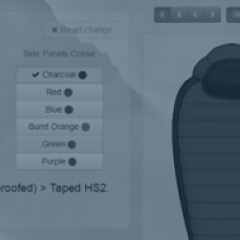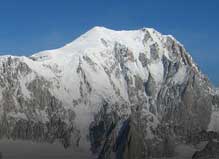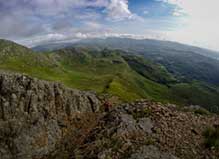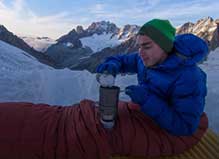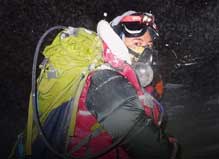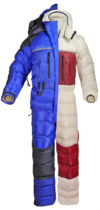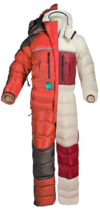The Lowdown
Extraordinary stories and technical knowhowCheck, Check and Check Again
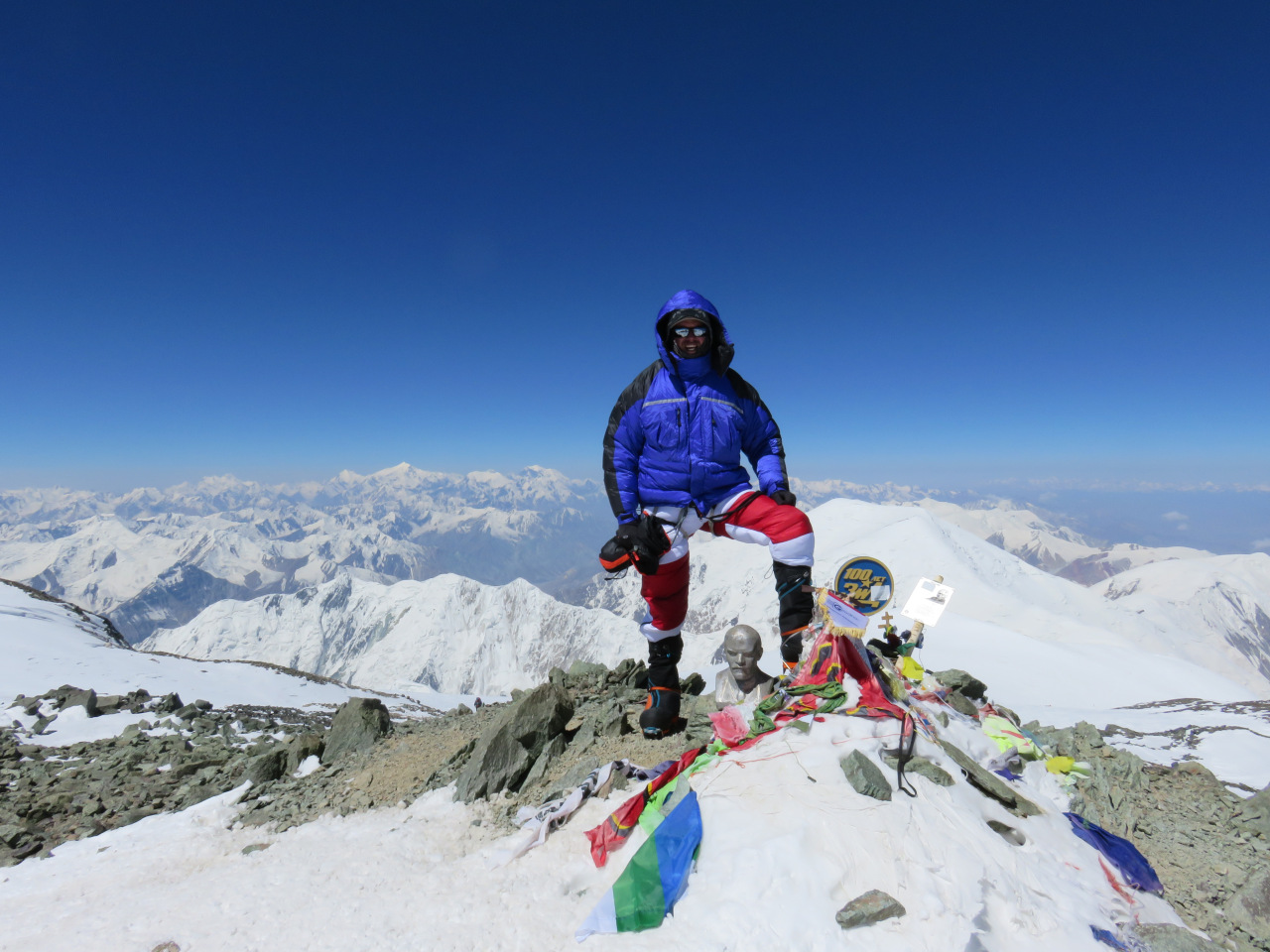
When we first came up with our Expedition Double Suit, we were well aware of why it was needed: big mountains mean a big range of temperatures, but a one-piece suit strapped down under a harness pretty much scuppers any chance of adjusting your layers. So our add-a-layer, lose-a-layer, keep-your-harness-on idea was sound, but of course, we needed someone to take it out and make sure we’d got it right.
Much as we’d like to hang a Gone Climbin’ sign on the door and nip across to the Himalayas for some product testing, we had to concede that we were better letting someone else do it.
One such person was Ben Kane, who took the prototype to Manaslu and gave us some invaluable info about the conditions, about what he did, and about how the suit behaved. Along with performance data from other testers, we were able to develop a suit which was – after all – a good idea!
A really important part of the testing though is that it never stops. We don’t have a warehouse full of stock, which means we can keep tweaking and poking things as and when we have new ideas…but whenever we do that, we need to check them again.
Ben was intending to climb Dhaulagiri (which would have been ideal), but unfortunately that had to be called off…but he still went climbing. And he still took the suit.
A summit of Kyrgyzstan’s Lenin Peak (and an attempt on Khan Tengri) produced plenty of facts and figures about what he wore, at what height, for how long and how it performed – both on its own, as part of a Sleep System and by comparison to our other gear. For example
“I started in the inner suit on summit day (from 6100m) at about 3am, and climbed until just after dawn when the wind picked up, donned the over jacket and was cosy until the summit at 11am. Not long after on the descent I removed the over jacket and kept the inner on all the way back to Camp 3 at 6100m.”
And plenty more detail, which we shan’t trouble you with here.
All that detail is then picked over and considered, bit by tiny little bit: people use our gear in places where the weather could kill you in minutes, so we need to know how it behaves!
It should be no great surprise that we test our gear before it becomes available, but when Ben sent us his latest photos, we thought we’d mention a little bit about how it’s done.
Another way that it’s done, of course, is through the medium of everyone who uses our gear telling us about it…so keep the stories coming!
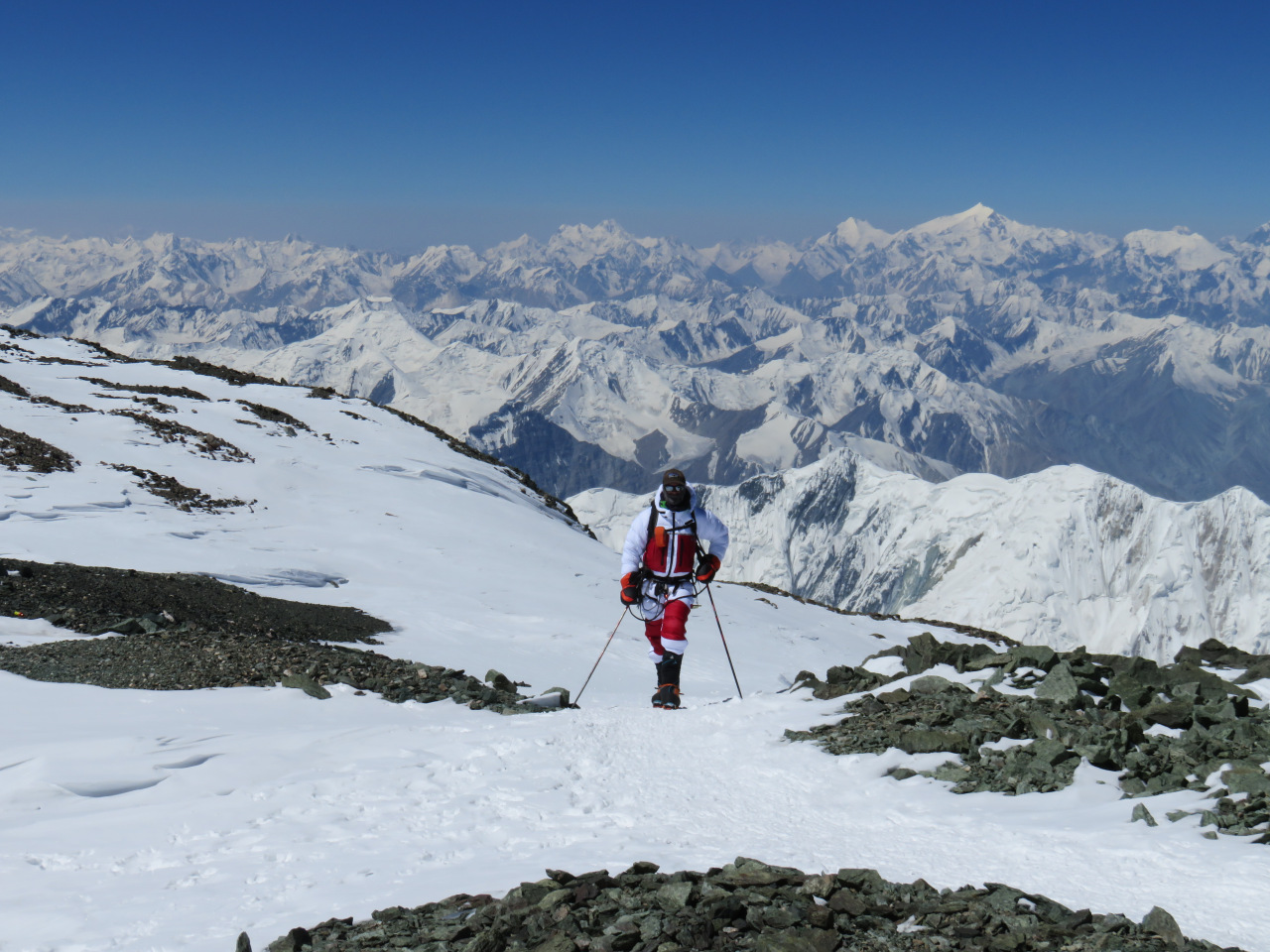
A really important part of the testing is that it never stops.
| An expedition double suit made of 2 layers: a one-piece Inner Down Suit & a... |
| An expedition double suit made of 2 layers: a one-piece Inner Down Suit & a... |







